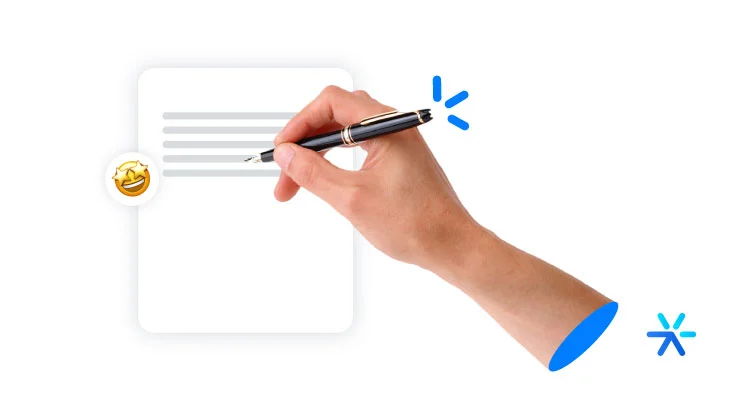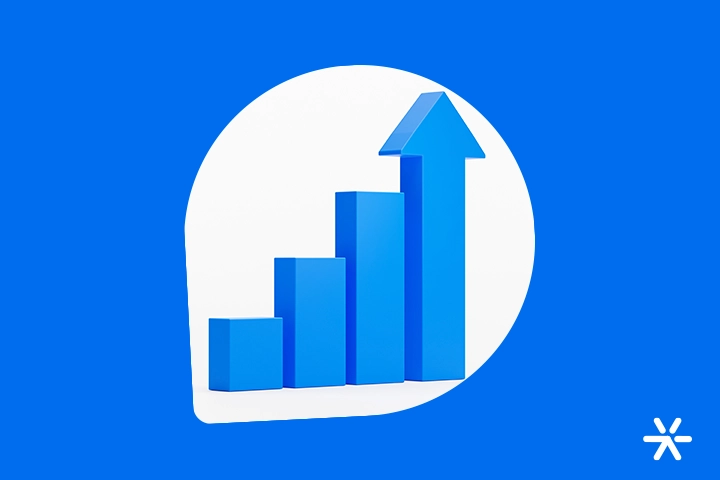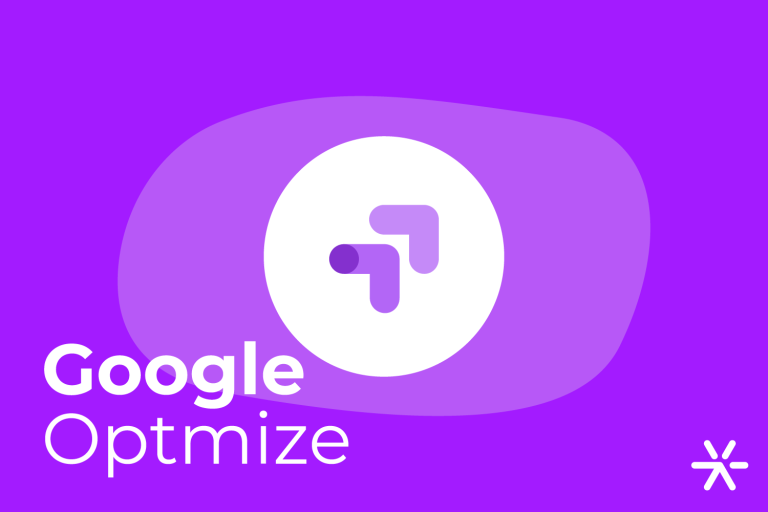8 New Sales Channels for You to Test in 2025
Sales in various sectors, whether online or offline, have changed significantly in recent years, especially with the pandemic, and have had to adapt to the new desires and needs of consumers.
The boundaries between physical and virtual retail have blurred, and now companies differentiate themselves in how they present possibilities and conveniences to their customers.
With this scenario in mind, some digital sales channels have been gaining prominence.
Tools like Marketplaces, Social Selling, Google Shopping, and WhatsApp are some of the highlights of this period, along with other strong trends approaching the next year, such as Live Commerce, Conversational Marketing, and Referral Marketing.
Learn more about all these channels and a few others in this blog article.
What are Sales Channels?

Sales channels can be defined as the point of contact between the consumer and the company that enables a sale or contract.
These channels can be online or offline.
For example, let’s say a company sells decorated cakes and wants to offer its products through different sales options.
This brand might use social media, a physical store, WhatsApp, and a website as its sales channels.
These are examples of sales channels — and each of them has different dynamics and characteristics.
Also read: ICP, Persona, and Target Audience: Don't Confuse These 3 Concepts
What are the Types of Sales Channels?

Sales channels are divided into two groups: online and offline.
They can work together, especially to keep up with the pace of changes in consumer trends.
Main Online Sales Channels
The main online sales platforms today are E-commerce, Marketplaces, Social Media, Affiliate Networks, Google, and the entire group of tools it integrates (Google Shopping, Adwords, Display Network, etc.).
Main Offline Sales Channels
The main offline sales channels include: physical stores, franchises, multi-brand stores, distributors, direct sales through commercial representatives, and telemarketing.
8 New Online Sales Channels to Test in 2025
In the last two years, we’ve witnessed the acceleration of trends that were already growing before the pandemic.
Digital platforms had to be explored even by those who were still resistant, and the shopping journey is increasingly online — or at least more integrated with the virtual world.
Within this context, we’ve analyzed 8 sales channels that have stood out and are expected to be even more amplified in 2025.
Here they are:
1. E-commerce
E-commerce, or online store, was one of the sales channels that grew the most in recent years.
In 2020, the sector grew by 73.88% compared to the previous year.
It was also in 2020 that 56% of consumers had their first online shopping experience (Modern Consumer).
In this type of sales channel, the experience can be developed from scratch or through larger platforms that help create smaller stores.
Through e-commerce, a brand has its own online address and offers its products or services there.
2. Marketplace
A Marketplace is an online store that features various brands for the consumer, without requiring them to leave the navigation of the same site.
These larger stores with stronger brand names, along with more complete online sales technologies and dynamics, boost the brands sold there.
The Marketplace can be compared to an online shopping mall — examples of this format include Amaro and Dafiti.
3. Social Selling
Social Selling means using social networks to connect with potential consumers.
It involves strategies both for individual contact and for ads aimed at this purpose.
Additionally, platforms like Facebook and Instagram allow store owners to create product catalogs within them, encouraging users to make a purchase without having to go to an external website.
4. Live Commerce
Another emerging trend in sales channels is Live Commerce.
By combining the entertainment format of live streams, which grew in recent years, with the convenience of online buying and selling, this new format emerged, mixing entertainment, interaction, and shopping.
This format has achieved excellent conversion rates when executed well, and there are different platforms that enable live streams, such as Instagram and YouTube.
The latter even announced that it will launch the “shoppable videos” option, which is currently being tested.
5. Conversational Marketing
Conversational Marketing includes actions and tools related to conversation contexts.
It can be explored with technologies such as chatbots and virtual assistants.
These tools can help capture leads, on conversion pages and websites, and assist the sales team by focusing on what really matters, as questions can be answered by these automation solutions.
Conversational Marketing also plays a role in pre-qualification, so that salespeople work with warmer leads.
6. Google Shopping
Remember we mentioned that in Social Selling, we can use product catalogs on social media?
Well, Google has its own product showcase: Google Shopping.
Taking advantage of the platform’s large volume of searches, Google Shopping is an interesting strategy to capture the attention of consumers who are already in the final stages of their purchase decision.
You may also be interested in: 13 Differences Between B2B and B2C Sales and How to Optimize Your Strategy
7. Referral or Affiliate Marketing
Referral or Affiliate Marketing is the strategy of selling products or services through brand promoters, whether they are other consumers, influencers, or even other companies that validate the purchase experience and the quality of what is offered.
The promotion usually happens through parameterized links or sales coupons — and those who recommend a brand receive a commission for doing so.
8. WhatsApp
In addition to WhatsApp Business facilitating communication between brands and consumers, the platform has invested in recent times in new features that make it one of the sales channels worth paying attention to.
Today, it is possible to create product catalogs in the app and use WhatsApp Pay to complete the entire purchase process within the app itself.
Key Metrics and Success Indicators for Sales Channels

Defining and combining the best sales channels is crucial, but it’s also essential to monitor the results of each one, so the brand can make investment decisions based on data.
In the post “8 Sales and Marketing KPIs that Leaders Want to See on Your Dashboard,” you can check out all of them, but here are three key ones:
Conversion Rate
The Conversion Rate can be defined as the percentage between the number of visitors to your conversion pages and the number of people who convert — and this depends on what you define as a conversion for that action.
The specific sales conversion rate is the percentage between the number of leads or qualified leads and those contacts who actually become customers of the company.
To calculate your sales conversion rate, you need to track lead numbers and qualifications, along with good control over closed contracts or sales.
With this information, calculating the percentage conversion rate is quite simple.
To understand which channels are yielding better sales results, analyze the conversion rates individually for each channel.
CAC (Customer Acquisition Cost)
CAC is a metric that helps understand your company’s financial health and the results of investments in Marketing and Sales.
CAC is calculated by dividing the sum of investments in these two areas by the number of customers acquired within the same time period.
This allows you to determine the average cost of acquiring each customer for your brand.
You can also calculate the CAC for each specific channel to track individual metrics.
ROI (Return on Investment)
ROI or Return on Investment is one of the most important sales and marketing KPIs and deserves your attention and constant monitoring.
This is because ROI calculates how much money the company gains or loses from investments made.
ROI is primarily tracked when discussing marketing investments related to the costs of strategies in this sector.
This allows you and your team to control the results of campaigns, actions, and newly implemented marketing strategies.
The formula for calculating ROI is as follows:
Like the other metrics, ROI can also be understood individually for each channel.
Conclusion
Combining different sales channels can yield the best results in today’s landscape, with so many tools, possibilities, and emerging consumer trends.
Understand what makes sense for your brand, analyze the results, and invest in the tools and platforms that offer the best metrics.
And rely on Leadster to optimize your conversions!
To test our Conversational Marketing platform for free, simply visit the website and request a demo.








